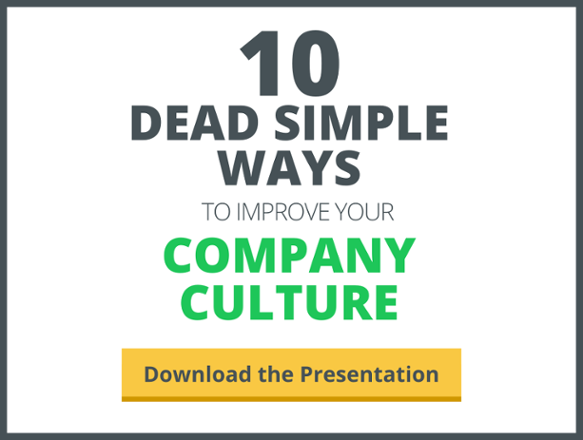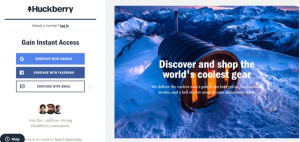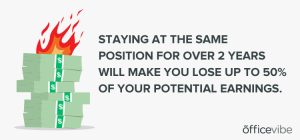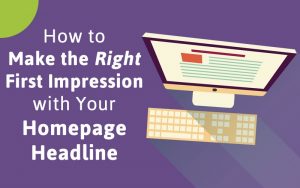— August 11, 2017

jeonsango / Pixabay
Data and analytics are the next big thing in HR, but do you really know how to implement your findings in meaningful ways?
When we spoke with people analytics thought leader Lisa Donchak of the Wharton School, she explained, “Even 15-20 years ago, there were very few institutions rigorously collecting this data about anything, much less about their employees or who they might want to hire.”
Now, within the last year, Deloitte found 56 percent more companies are correlating people data to business performance — and 50 percent more are using people data to predict business performance.
Still, HR analytics is relatively new and often undervalued. “Management guru” David Ulrich took a meta approach to this problem by applying analytics to assess the impact of analytics. His findings indicate the need to focus people analytics on business results and communicate crucial information to the right stakeholders.
In this post, we’ll review what you need to know about data analytics, what data analytics has already taught us about people practices, and how you can leverage the power of people data without an advanced degree in statistics.
What’s the big deal about data?
Data analytics has become a hugely valuable field supporting more informed business decisions, from operations to marketing. Finally, its power has extended to HR.
When Dr. Michael Moon applied analytics within a process methodology, she improved the first year new hire retention rate by 40 percent for corporate positions:
“It was the first time that I used data for something practical. That really was the eye-opener for me. It was very exciting for me to do interviews and surveys, analyze the data, and do a root cause analysis of what was going on, and then to be able to make suggestions as a result.”
Modern HR isn’t bumbling Toby in The Office — and it isn’t the efficiency consultants in Office Space, either. Analytics blows past these tired stereotypes by boosting HR’s credibility and effectiveness with data-based insights that complement emotional intelligence and experience-based wisdom. Analytics can also help reduce existing biases for real or perceived discrimination or favoritism.
Analytics is more than analysis
HR is approaching big data with traditional employee data, survey data, and external talent supply and demand data in addition to more creative sources like wearable devices, email analysis, and social media.
But raw data is meaningless. Even summarized in reports, data is only meaningful when organizations can interpret that data and how it can be applied toward their goals.
Analytics links data together to tell a story
There are several levels of people or workforce analytics:
- Descriptive analytics are metrics, i.e., interview-to-hire ratios or average training attendance.
- Cognitive analytics are insights, i.e., training sessions with the highest return on investment.
- Predictive analytics are a forecast, i.e., expected skill gap for various recruitment scenarios.
- Prescriptive analytics are a direction, i.e., what training do which employees require to address that skill gap.
Analytics can go beyond reporting on past data to assess how significant trends are and what they could mean for the future. Competitive organizations need the foundation and competencies to use analytics methodology and technology effectively.
What data tells us about human capital
McKinsey demonstrates the people analytics process with the example of a global quick-service restaurant chain:
1. Start with a red flag metric.
- Turnover higher than the competition
2. Define goals and corresponding metrics.
- Revenue growth per store
- Average customer satisfaction per shift
- Average speed of service per shift
3. Build from internal data sources for relevant information.
- Online psychometric assessment games
- Employee surveys on management practices
- Sensors for amount of movement and speech
4. Analyze for correlations between key variables.
- Logistic-regression and unsupervised-learning models
- Confirm or refute internal beliefs about what impacts goals
5. Interpret insights and application of findings.
- Hire for focus, not friendliness, because it correlates with performance
- Motivate with culture and career development, not variable compensation
6. Pilot implementation and measure impact.
- Sales increased by five percent in four months
- Customer satisfaction increased over 100 percent
- Speed of service improved by 30 seconds
- Turnover reduced substantially
Your people are likely your biggest investment, so even basic fiscal responsibility should encourage you to make your people decisions more data-driven.
What data tells us about recognition
Within talent management and company culture, employee recognition suffers from a lack of hard evidence in comparison to areas like recruitment and training. But just because employee recognition is less concrete doesn’t mean it’s any less valuable to an organization’s success and bottom line.
Studies show that recognition can increase:
- Engagement by 60 percent
- Productivity and performance by 14 percent
- Conscientiousness, collaboration, and creativity
With its Watson Talent Insights solution, IBM applied analytics to demonstrate how employee recognition significantly predicts employee engagement and employee experience. Bolstered by these findings, IBM dove deeper:
IBM used cognitive tools to show how non-monetary rewards had diminishing returns — there was a tipping point when non-monetary rewards stopped increasing engagement. The data showed that engagement was highest with a balance of frequency and monetary value. Rewards of high monetary value given too infrequently, for instance, also resulted in diminishing returns.
Leadership development consultancy Zenger/Folkman found surprising insights emerge from 328 managers’ 360-degree feedback surveys and self-assessments:
- Manager assessment of their own feedback correlated with negative feedback, regardless of positive feedback.
- Meanwhile, 360-degree ratings on manager feedback correlated with positive feedback, regardless of negative feedback.
Leaders may have believed their duty was to identify errors, but evidence indicated that positive reinforcement and support were more helpful.
How to use data for effective employee recognition
Any organization can benefit from HR analytics. The following ten recommendations will help you enrich your business decisions with people data.
1. Learn from others. Different functions, organizations, and academic studies can teach you how to use analytics and reveal what they have already gleaned from it. Based on research to date, employee recognition programs are most effective when they are social, and continuous.
2. Collect data. Even if you don’t have a system in place to use the data yet, start collecting it now. Begin with a system to track and quantify employee contributions and how other people recognize them.
3. Clean data. Your credibility depends on the quality of your data. If your systems are slow, you could have old data, and if your processes are prone to error, your data could be inaccurate. Ensure that your HRIS is up to date with good governance practices.
4. Sharpen technical skills in HR. There’s a lot you can accomplish with data using software you might already have, like Excel. You can learn about Excel and analytics on Lynda or YouTube. Ensure your team can implement appropriate statistical methods and interpret the results accurately.
5. Budget creatively. If you don’t have a budget for analytics, look for opportunities to redirect from relevant budgets that will benefit from analytics. Evaluate the costs and benefits of action vs. inaction with the support of the finance department.
6. Trial a tool. Try software that will allow you to securely store, easily access, and analyze your own data. For example: McKinsey offers a free survey and report for organizational health.
7. Bring together diverse skills. Look to senior leaders, finance, marketing, operations, external experts, and/or technology for competencies in data science, statistics, visualization, industrial/organizational psychology, storytelling, consultancy, change management, and business acumen.
8. Focus on business. Learn what drives sales growth, customer loyalty, and product innovation. Identify quick wins with clear business impact before directing your efforts toward more narrowly focused HR goals. Observe how your people align with your stated culture and values based on the recognition they give and receive for demonstrating those values.
9. Remember the people in people analytics. Humanize the data and explain its usage in a simple way that respects employee privacy. When you make a meaningful decision, be transparent about the analytics insights that informed that decision and how they were evaluated with other sources of information.
10. Communicate the value. All stakeholders, including employees need to understand how they can benefit from people analytics. An internal social feed increases the value of recognition and highlights contributions. Reviewing aggregate data helps organizations identify performance trends among employees, teams, and the organization.
Going forward
HR analytics involves applied science, emotional intelligence, business acumen, and strategy. It’s complex and it’s new. Breaking it down into actionable, achievable steps will help you improve your people practices and stay competitive.
One HR analytics employee at an organization with nearly 100,000 employees emphasizes that the field is still in development:
“Continuous process improvement and continuous learning should be embedded and reinforced in business culture.”
As organizations figure out how to use HR analytics for their best impact, leaders need to be open to suggestions for improving the analytics process and implementing insights.
If you’re ready to take the next step toward building a stronger organizational culture, check out our latest guide:
Business & Finance Articles on Business 2 Community
(52)
Report Post







